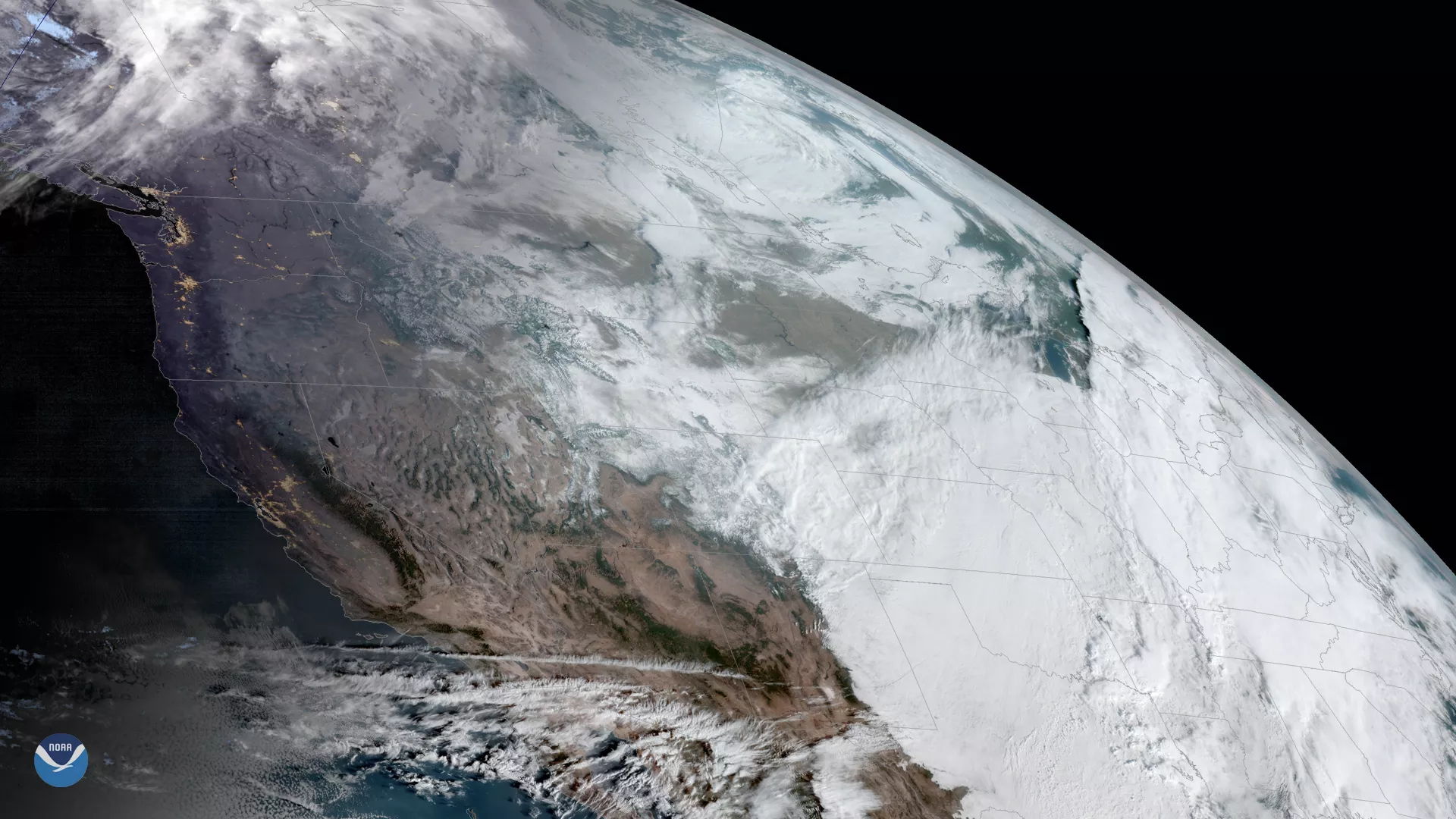
GOES West is watching an early-season snowstorm that is moving into the Plains and Midwest from the Rocky Mountains, which have already received several inches of snow earlier this week due to an area of low pressure interacting with a mass of arctic air brought southward by a jet stream plunge.
Denver International Airport reported 6.6 inches of snowfall yesterday, and other parts of the metro area received as much as a foot, officially making it the city’s largest one-day October snowfall since 2011. Denver also broke its record low this morning, Oct. 30, 2019, with a reading of 3 degrees Fahrenheit. The previous daily record was 7 degrees, set in 1991 , according to meteorologist Marty Coniglio.
Salt Lake City International Airport also reported a record overnight minimum temperature of 14 degrees Fahrenheit. Although records at the airport began in 1928, this is the lowest reading recorded in the city since 1874, according to Dr. Jim Steenburgh, a professor of atmospheric science at the University of Utah.
Although most of the snow fell in the mountains, parts of Michigan, Oklahoma, Kansas, Nebraska, Missouri, Illinois, and Iowa may see up to six inches of snow, though certain areas will likely receive just light to moderate snowfall or a rain-and-snow mix.
The GOES West satellite, also known as GOES-17, provides geostationary satellite coverage of the Western Hemisphere, including the United States, the Pacific Ocean, Alaska and Hawaii. First launched in March 2018, the satellite became fully operational in February 2019.
